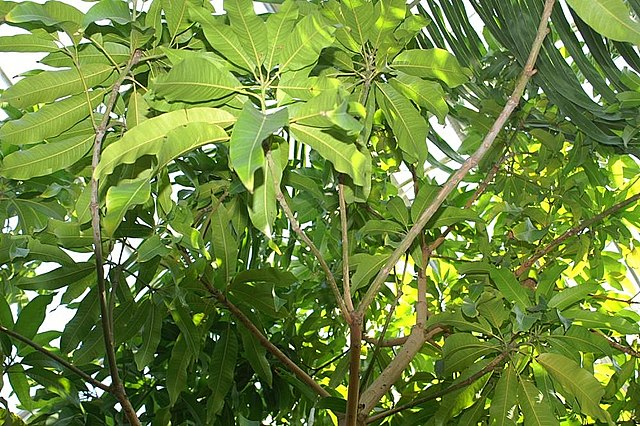Mango
Mangifera indica
Family: Anacardiaceae | Place of Origin: Southern Asia
Origins and history:
The history of the Mango is a bit difficult to find within writings however, its origin is believed to be somewhere near present-day Malaya or in Thailand/Cambodia-Vietnam area. First recorded cultivation could not be directly found however, many uses from India have been discovered and tied to this plant, so believe could be India was one of the first to settle and make great use of this fruit. Nowadays, is common among several locations however, despite this importance as a global food crop and cultural significance in many regions of the world, current ranges of wild Mango are not well characterized or documented. However, mango is known to be the most tropical fruit of Asia, grown commercially in more than 87 countries. Mango currently ranks fifth in total production among major fruit crops worldwide. As mentioned, India ranks first among world’s mango producing countries, accounting for 54.2% of the total mangoes produced worldwide. Other prominent mango producing countries include China, Thailand, Indonesia, the Philippines, Pakistan, and Mexico.

Identification characteristics
- General: Mangos are considered a tropical fruit. With that said, they are often located in forests/rainforest environments. The largest producer of mangos is India while several other locations are known to harvest this plant. The leaves on a Mangifera indica are oblong with opposite arrangement.
- Fruit and Floral morphology: The flowering is in small clusters that hang among the leaves and fruit, which is the main focus of mango. These fruits are usually about 3.5 inches long in the wild and are egg/pear shaped. These greenish fruits that become yellow as they ripen are, by definition, considered a fleshy drupe with its structure.
- Scent: The Mango has a very strong aroma that is well described as both tropical and sweet, as to why it is often associated with or in fragrances with a tropical name. this aroma is often used in essential oils, candles, perfumes, and shampoos.
Uses and preparation
Many parts of the mango tree are considered very useful. The most common part being the fruit, which is used most appropriately as a dessert fruit. However, said fruit can also be used as a powder, they can be pickled and can also be made into a jam or jelly. In India, surplus mango crops are sometimes turned into a vinegar product. The bark and leaves of a mango tree yield a wonderful yellow dye that is fantastic for cotton, wool, and silk. The wood from the tree is used across India for cheap furniture, ceiling and floorboards, tea-chests, and some boat building.
Many parts of the mango are also associated with medicinal uses. These can vary among the different parts of the plant. Mango has been an important herb in the Ayurvedic and indigenous medical systems for over 4000 years. According to the Ayurveda, varied medicinal properties are attributed to different parts of the mango tree. The stem, bark, leaves, and specifically the mango kernels are all specific parts with found uses. Mango possesses antidiabetic, anti-oxidant, anti-viral, and anti-inflammatory properties. Various effects like antibacterial, anti-fungal, anti-parasitic, anti tumor, and anti-diarrheal have been found. Mangifera, a pharmacological and medicinally important chemical, has strong antioxidant, wound healing, antidiabetic activities.
Mango kernels have specifically been found to have a lot of good medicinal uses. The kernels themselves are known to contain several bioactive compounds (dietary fiber, vitamin c, etc.) with high antioxidant activity and health benefits. Some of the direct uses include; being used as a skincare agent, a substitute for cocoa butter, use as an anti-tumor or as an anti-obesity drug.